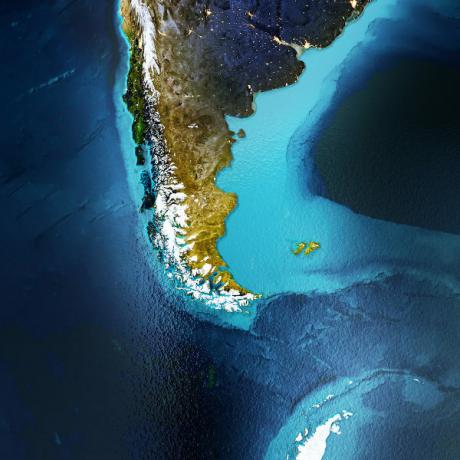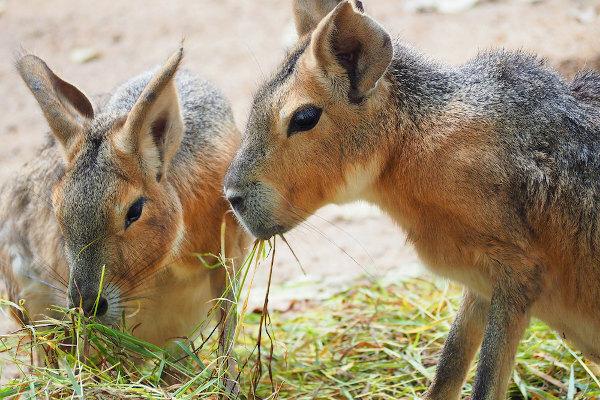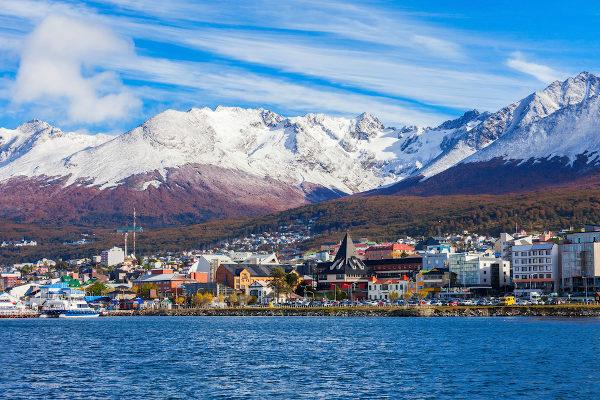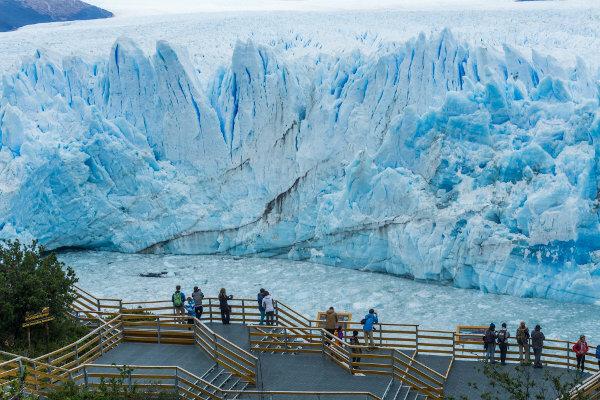A Patagonia It is a region divided between the territories of the Chile and the Argentina, located at the southern end of the South America. The desert or steppe-lined plateaus that characterize most of Argentine Patagonia, the to the east, they give way to the mountainous terrain of the Andes mountain range, where vegetation forms forestry. Most of Patagonia experiences a cool, dry climate, with the exception of a few wetlands to the west. In the south of the territory, the cold is accentuated and there is the formation of large glaciers, which have become an important tourist attraction in this region.
About 2 million people live in Patagonia, who carry out activities such as irrigated agriculture and sheep raising. O tourism, however, is today one of the main economic activities in the region.
Read too: Atacama Desert — located in Chile, it is the driest desert on Earth
Summary about Patagonia
Patagonia is an extensive region located in the south of South America, divided between the territories of Chile and Argentina.
Its southernmost point is the archipelago of Tierra del Fuego.
It presents climate predominantly cold and dry, with frost occurring throughout the year and precipitation in the form of snow during severe winters, mainly in the south.
You plateaus constitute most of the relief of Patagonia. Another outstanding feature is the Andes mountain range, located to the west.
Approximately 2 million inhabitants live in the region.
Sheep farming, irrigated agriculture and tourism are the main economic activities in Patagonia.
location of patagonia

The region of Patagonia is located in the southern end of America.It comprises part of the territories of Argentina and Chile, being an area under the government of both countries. Patagonia extends over an area of approximately 1,060,000 km², with the largest portion located in Argentine territory.
The territory of Patagonia is distributed between the latitudes 37º and 51º in the Southern Hemisphere, being limited by the following structures and bodies of water:
Andes mountain range, to the west;
Colorado River in Argentina to the north;
Atlantic Ocean, to the east;
Tierra del Fuego, to the south.
The Strait of Magellan corresponds to the narrow strip that separates the continental portion of Patagonia from the archipelago known as Tierra del Fuego, bathed by the waters of the South Atlantic. The islands constitute the southernmost point of Patagonia and also of the South American continent.
Features of Patagonia
Patagonian climate
Located in the temperate zone of the Southern Hemisphere, the main climatic factors acting in this region, in addition to latitude, are the Ocean currents of the South Pacific and the Falklands, the relief and the winds that blow from the oceans.
The region Predominantly cold and dry climates, with summers hot and marked by the incidence of strong winds and winters rigorous, which provide the occurrence of frosts throughout the year and precipitation in the form of snow, especially in southern Patagonia.
O northern Patagonia is characterized by the semiarid climate with high temperature range Yearly. Temperatures vary between maximums of 40ºC and minimums that drop to -5ºC or less. Rainfall varies between 100-400 mm per year in this region. To the south, the humidity is concentrated west of the Andes mountain range. Outside the Andean region, the climate is cold and dry, with mild temperatures in the summer and very cold winters, which can record lows between -9 ºC and -33 ºC.
The climatic conditions found in the southernmost lands of Patagonia provide for the maintenance of a large glacier, called Pelito Moreno, located in the Argentine portion.
relief of patagonia
With the exception of Andean Patagonia, the relief of this territory is formed mainly by extensive plateaus that rise to altitudes up to 1500 meters. The eastern coastal landscape of Patagonia is made up of many cliffs, which are large cliffs carved by the action of sea water, and very narrow coastal plains.
The western edge of the highlands meets the Andes mountain range, where the highest elevations in Patagonia are found. Between the mountains best known in the Patagonian region, is Mount Fitz Roy, whose peak is located at an altitude of 3400 meters.
Patagonian fauna

Patagonia is home to a fauna of approximately 500 different species animalsin between reptiles, mammals, birds, insects and rodents, which live mainly in Chilean territory. The physical aspects of the region resulted in a kind of isolation that culminated in the appearance of endemic species, that is, found only in the Patagonian territory. Some of them are currently endangered.
Check out some of the animals found in Patagonia:
→ South Andean deer;
→ Andean cat;
→ albatross;
→ Patagonian mara;
→ penguins;
→ humpback whale;
→ darwin's nandu (or little nandu);
→ cougar;
→ South Andean red deer;
→ sea lion;
→ Argentine gray fox;
→ pudu (small deer).
It is noteworthy that marine animals are observed in the waters close to the Valdés peninsula, on the Atlantic coast. The area was listed as a World Heritage Site by the Unesco in 1999.
flora of patagonia
Many steppes, composed of grasses and shrubs, and desert regions, composed of plants adapted to dry climates, make up most of the Patagonian landscape. The exception is in the west of the territory, where there are deciduous forests and woods. Among the plants that make up the Patagonian flora, there are many endemic species.
Many wild fruits, orchids, heathers, beeches, species of lichens and fungi, desert shrubs, medium-sized trees and tuff grasses are found in Patagonia.
Read too: Iguazu Falls — the set of waterfalls between Brazil and Argentina
economy of patagonia
A small population of 2 million people lives in the Patagonia region, a territory with a population density of only 2 inhabitants/km². The economy that develops there concentrates its activities in the sectors primary It is tertiary.
O Patagonian subsoil has mineral riches, such as localized fields of Petroleum It is natural gas. Mineral resources, such as coal and ore, are already exploited in certain parts of the territory, where deposits of manganese, lead and copper are also present. The great hydroelectric potential of the region's rivers, many formed from meltwater in the Andean region, led to the construction of dams to generate electricity.
A sheep farming is another important activity of the primary sector developed in Patagonia. A agriculture, part of which is irrigated, produces mainly wheat and fruits such as apples, plums, peaches and pears.
Tourism in Patagonia
tourism is currently the main economic activity in Patagonia. Hundreds of thousands of tourists visit the region annually, attracted by factors such as the stunning landscapes, the intense cold and snow, the wild animals found only in this region of South America, and even the countless possibilities of hiking and climbing that can be performed. See below some of the main tourist attractions in Patagonia:
→ Torres del Paine National Park (Chile), with its mountains and glaciers.

→ Ushuaia (Argentina), capital of the province of Tierra del Fuego.

→ El Calafate (Argentina), where some of the largest glaciers in Patagonia are located.

Fire land
Tierra del Fuego is a archipelago located at the southern tip of South America, being separated from the mainland by the Strait of Magellan. It has an area of 73,746 km², divided between Chile, which owns two thirds of the archipelago, and Argentina. O archipelago it is formed by a large main island, called Tierra del Fuego, five middle islands and other smaller islands. It presents a very cold climate with high precipitation, in addition to relief sculpted by glaciers.
Due to its remote location, the archipelago was dubbed the End of the World. The name Terra do Fogo was given by the Portuguese explorer Fernão de Magalhães, in the 16th century, due to the bonfires lit by the population to keep warm.
Is there Patagonia in Brazil?
The Patagonia region extends exclusively through the territories of Chile and Argentina. In this way, she does not understand Brazil. There is therefore no Patagonia in the Brazilian territory.
By Paloma Guitarrara
Geography Teacher

